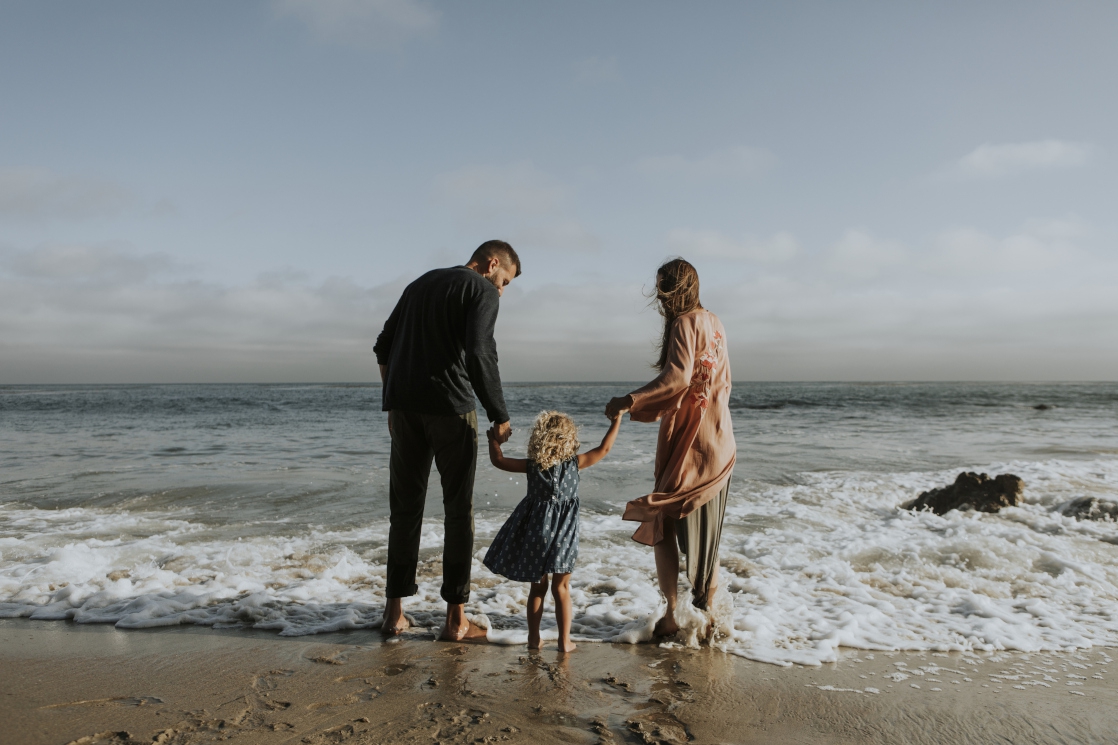The views expressed in our content reflect individual perspectives and do not represent the authoritative views of the Baha'i Faith.
When I started dating my husband, I met his four-year-old son. Everything was peachy. We would all play together, hang out, watch movies. But not for long.
RELATED: What I Learned about Chastity Before Marriage
It turned out that we were also being a little naive about our wannabe stepfamily.
As Eric and I got closer and our relationship became more serious, new emotions surfaced for us. Like an unmarked police car suddenly appearing in your rear view mirror, I never saw those feelings coming. Neither did my husband, nor his son.
Our relationship became a lover’s triangle of some strange sort:
- Father loves child and new girlfriend.
- Child loves dad and wonders if he’ll start losing him to her as dad’s attention is no longer exclusively on him.
- Girlfriend wonders if she’ll ever be a priority and an equal in her partner’s life.
- Father wonders why girlfriend doesn’t love his son the way he does.
- Girlfriend wants to be integrated in their dynamic to stop feeling like a third party. It feels like dad and son are a whole pie, and there’s no room for girlfriend.
- Boyfriend starts to see girlfriend as a parent and shares responsibilities for his son.
- Girlfriend starts to bond with child.
- Child starts to bond with girlfriend.
- Child still confused. Sometimes he wants his biological parents back together, sometimes very happy that he gets a new stepmom.
- And on, and on.
Joyfully, this story has a happy “on-going,” rather than “ending,” as we’re all still alive and living our stepfamily life day by day.
A little faith in God has helped me grow in this relationship. I understand why I receive these tests, and why Eric and my step-son receive theirs, too. They come for our growth, and the Baha’i teachings assure me that no one endures tests beyond their capacity. Baha’u’llah, the prophet and founder of the Baha’i Faith, wrote:
[God] will never deal unjustly with any one, neither will He task a soul beyond its power. He, verily, is the Compassionate, the All-Merciful.
And His son Abdu’l-Baha, one of the central figures of the Baha’i Faith, said:
The more difficulties one sees in the world the more perfect one becomes. The more you plough and dig the ground the more fertile it becomes. The more you cut the branches of a tree the higher and stronger it grows. The more you put the gold in the fire the purer it becomes.
My tests have helped me learn that it’s far more complicated to make a stepfamily work than any of us would’ve imagined. On my end, I held on to an innate desire for a nuclear family for a long time. That was my image of a perfect family. Yet, here I was, forming a non-nuclear family. One thing’s for sure: I knew I had to made it work.
RELATED: 3 Spiritual Steps to Building – and Keeping – Family Unity
The fact that Eric came with a son was never a red flag for me. Rather, it was a test for my spiritual growth — the growth from wanting a nuclear family, to realizing that a family is what you make it.
Despite the challenges, I knew Eric was the man I wanted to marry. We had to figure it out and make it work, no ifs, ands, or buts.
Types of Stepfamilies
I dug into the web a little for psychological research into stepfamilies, and I found three types: the romantic, the matriarchal and the neo-traditional.
The romantic approach is sort of where we started. But thankfully our eyes were quickly opened to its reality, and we knew it wasn’t a good path to continue down. The romantic phase is characterized by the bio parent thinking the step-parent would love their child the same way they do, and expecting the child to love, listen to and be close to the step-parent as they are with the bio-parent. Couples who continue to think this way have the highest rate of divorce, according to the conclusions of a longitudinal research study by Dr. James Bray, one of the fathers of stepfamily research.
RELATED: Negative and Positive: What’s the Best Relationship Ratio?
The matriarchal stepfamily has a lower chance of divorce. Though the marriage relationship may be in good standing, when it comes to parenting, tensions exist between husband and wife. The principal characteristic in the matriarchal stepfamily is the bio-mom’s dominant role. The stepdad isn’t seen as a dad, but mom’s partner. He’s not involved in discipline, and this is not necessarily by his own choice. They marry for a new marriage, not necessarily a new family.
Finally, there’s the neo-traditional stepfamily, which has the highest rate of success, characterized by couples that handle stress and challenges well. They typically acknowledge the difficulties associated with a stepfamily, and learn to become adaptive to the ongoing changes. The couple initially comes together to form a family, as well as be a couple. Thankfully, this is what my new family organically developed into when we learned how to bond in a stepfamily.
How to Bond in a Stepfamily
Before we ever knew about the types of stepfamilies, we enlisted the help of adoptive parents, especially those who had to take parenting classes, along with parents, elders and psychologists. We received excellent advice that assured us everybody’s feelings were normal and were part of a process.
One of the best lessons we received came from our friend who had adopted children. She talked of activities to do with my stepson meant to grow our bond.
She also said something that really resonated well with my husband: when the child is in our home, we are the parents. My husband was no longer a single parent, and didn’t have to take on all the responsibilities, because I was happy to share them with him. As silly as it may sound, being the one to tie our son’s shoes or make him a peanut butter sandwich were meaningful little steps for the three of us.
RELATED: Family Meals: A Space to Bond, Reconnect, and Heal
Our friend recommended several different kinds of bonding activities: participate in play time, feeding, bath and bedtime. Sure enough, as soon as I did those things with our son, we all grew closer.
Luckily, we received these suggestions a few months into our relationship—an important coincidence because by then, our son was ready for these changes to happen.
A Budding Stepfamily
I’d like to tell you that it was all rosy after that. But truth is, it wasn’t always easy. We all took part in the transformative process in which a stepfamily learns to grow.
However, when I look at the big picture, I realize that every day we were growing closer and closer together. So much so, that not long after we announced our wedding plans to my stepson, he came in the home joyfully calling, “mommy, mommy!” Wow I hadn’t expected that! It melted my heart. He came to this title for me all on his own.
But the hurdles keep coming from time to time. For example, now, over a year into the marriage, our son still sometimes says he wished his mom and dad were still married. Other times he wished we would all live in the same house (with his bio-mom, her partner, Eric and I) and we wouldn’t have to break up. Some other times, he snuggles with me and tells me he can’t wait for us to have a baby so he can have a sibling. Most importantly, he wants a sister!
The best thing we can do for him now is to be a good example of a healthy relationship — one of consultation, acceptance, and love, no matter what. Our marriage could not work if it weren’t for my amazing husband being so open, welcoming and seeing me as an equal parent.
RELATED: How Do You Know When You Find Your ‘Soulmate’?
We’ve since learned from amazing families who are also untraditional. One family was away, getting their new adopted child, only to discover they just got pregnant at the same time. Others had biological children first, then adopted; while others had to go through fertility treatments, some that worked, some that didn’t take.
Our family story has now become one of a stepfamily who wants to grow, in whatever form that may take. And you know what else? Our family story is the story of a family, as simple as that. We are a family.
















Comments
Sign in or create an account
Continue with Googleor